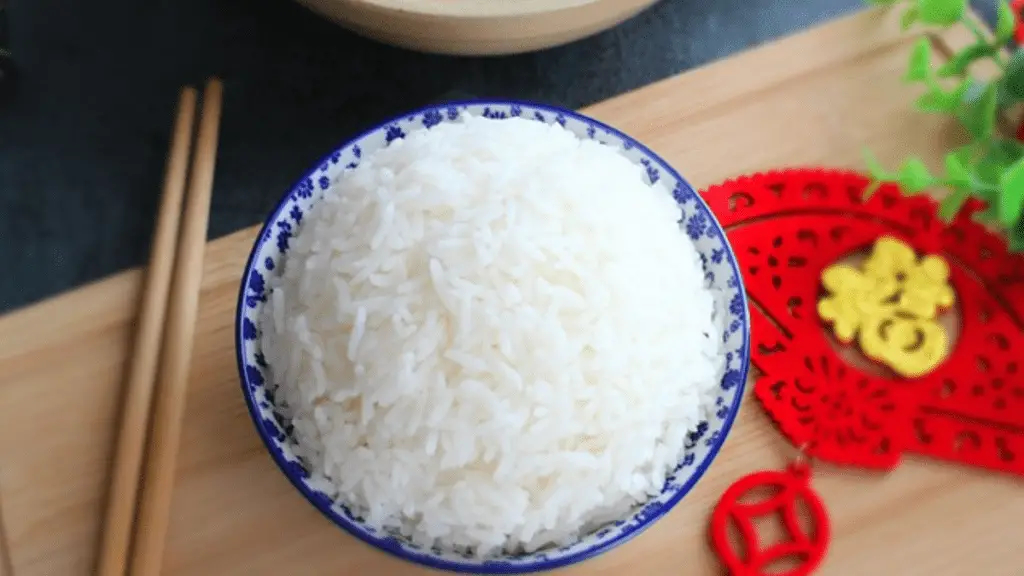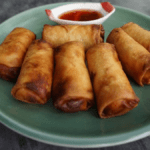A white rice recipe is a simple and fundamental method for preparing fluffy, versatile rice Typically, it involves rinsing the rice to remove excess starch, boiling it in water (with optional salt and oil or butter for added flavor), simmering until the grains absorb the water and become tender, and then fluffing it with a fork before serving.
Here’s a simple recipe for making white rice
Ingredients
- 1 cup white rice
- 2 cups water
- 1/2 teaspoon salt (optional)
- 1 tablespoon butter or olive oil (optional)
Instructions
1/ Rinse the rice: Place the rice in a fine-mesh strainer and rinse it under cold water until the water runs clear. This helps remove excess starch from the rice, resulting in fluffier grains.
2/ Boil the water: In a saucepan or pot, bring the 2 cups of water to a boil. You can add salt to the water at this stage if you prefer salted rice.
3/ Add rice: Once the water is boiling, add the rinsed rice to the pot. Give it a quick stir.
4/ Simmer: Reduce the heat to low and cover the pot with a lid. Let the rice simmer for about 15-20 minutes. Avoid opening the lid while the rice is cooking to prevent steam from escaping.
5/ Check for doneness: After 15-20 minutes, check the rice. It should have absorbed all the water and be tender. If the rice is still slightly firm or there’s excess water, cover it again and let it cook for a few more minutes.
6/ Fluff and serve: Once the rice is cooked through, remove the pot from the heat. Let it sit, covered, for a few minutes. Then, use a fork to fluff the rice gently. Add a tablespoon of butter or olive oil if desired for extra flavor and fluffiness.
7/ Serve: Your white rice is now ready to be served as a side dish with various main courses, or you can use it as a base for other recipes.
Tips and tricks to ensure you get perfect white rice every time

White Rice
Rinse the rice: Before cooking, rinse the rice under cold water until the water runs clear. This will remove excess starch, preventing the rice from becoming too sticky.
Water-to-rice ratio: The standard ratio is 2 cups of water for 1 cup of rice. However, this can vary depending on the type of rice, so check the package instructions for specific ratios.
Salt and fat: Adding a pinch of salt and a tablespoon of butter or oil to the cooking water can enhance the flavor of the rice.
Boiling method: Bring the water to a boil before adding the rice. Once added, reduce the heat to a low simmer and cover with a lid. Avoid stirring the rice while it’s cooking to prevent it from becoming sticky.
Simmering time: Allow the rice to simmer on low heat, undisturbed, until all the water is absorbed. This typically takes about 15-20 minutes. Keep the lid on to trap steam, which helps cook the rice evenly.
Resting period: After the cooking time, let the rice sit covered for a few minutes off the heat. This allows any remaining moisture to be distributed evenly, resulting in fluffier rice.
Fluff with a fork: Gently fluff the rice with a fork before serving to separate the grains and release excess steam.
Use quality rice. Different types of rice (long-grain, short-grain, jasmine, basmati, etc.) have distinct textures and flavors.
Avoid lifting the lid: Once you’ve covered the rice to simmer, resist the urge to peek inside. Opening the lid releases steam and can interfere with the cooking process.
Leftovers: Store any leftover rice in an airtight container in the refrigerator. Reheat it with a bit of water in the microwave or on the stovetop to refresh its texture.
Common Mistakes to Avoid

Not rinsing the rice: Skipping the rinsing step can result in overly sticky rice due to excess starch. Rinse the rice thoroughly until the water runs clear to achieve fluffier grains.
Incorrect water-to-rice ratio: Using too much or too little water can lead to either mushy or undercooked rice. Follow recommended ratios (usually 2 cups water for 1 cup of rice) or check the specific instructions for the type of rice being used.
Lifting the lid while cooking: Opening the lid during cooking allows steam to escape, which interferes with the cooking process. It can result in unevenly cooked or sticky rice. Keep the lid closed until the cooking time is complete.
Cooking at the wrong temperature: Cooking white rice at too high a temperature can cause it to boil over or cook too quickly, resulting in unevenly cooked grains. Maintain a low simmer once the rice is added to the boiling water.
Stirring the rice too much: Stirring the white rice while it’s cooking can break the grains and make the final result sticky. After adding rice to the water, gently stir once, then avoid stirring further.
Skipping the resting period: Allowing the rice to rest off the heat after cooking is crucial.
Using the wrong pot: Using a pot that’s too small can cause the rice to cook unevenly or spill over during boiling. Choose an appropriately sized pot to allow room for the rice to expand.
Not adjusting for different rice types: Different types of rice (long-grain, short-grain, basmati, jasmine, etc.) may require different cooking times or water-to-rice ratios. Always refer to specific instructions for the type of rice you’re cooking.
Nutrition Facts

The approximate nutrition facts for 1 cup (186 grams) of cooked, medium-grain white rice.
- Calories: 242
- Carbohydrates: 53.2 grams
- Protein: 4.4 grams
- Fat: 0.4 grams
- Fiber: 0.6 grams
- Sugars: 0.1 grams
- Sodium: 0.7 milligrams
Please note that these values are approximate and can vary depending on the specific type and brand of white rice, as well as the cooking method. Additionally, white rice is primarily composed of carbohydrates, with minimal fat and protein content.






